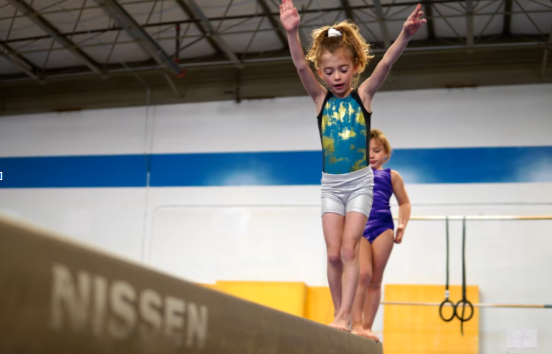Gymnastics is one of the most dynamic and rewarding sports, combining strength, flexibility, balance, and coordination into one artful discipline.
For beginners, it may seem challenging at first—but with the right guidance, patience, and consistent practice, it quickly becomes an exciting journey of self-improvement. Whether you’re looking to build fitness, learn new skills, or simply have fun, beginner gymnastics offers a structured way to develop both your body and confidence.
Start with Basic Warm-Ups and Flexibility Training
Every beginner gymnastics session should begin with a proper warm-up. Stretching and warming up your muscles are essential to prevent injury and improve performance. Start with light cardio such as jogging in place or jumping jacks to increase your heart rate. Then move into dynamic stretches—arm circles, lunges, leg swings, and shoulder rolls.
Flexibility is a cornerstone of gymnastics, so spend time stretching your hamstrings, back, and shoulders. Beginners should practice basic stretches like the pike, straddle, and bridge positions. Flexibility training doesn’t happen overnight, but regular stretching sessions will gradually improve your range of motion and help you perform skills more smoothly and safely.
Learn the Fundamental Gymnastics Positions
Before performing any advanced moves, it’s important to master foundational positions that form the building blocks of gymnastics. These include the straight body, tuck, straddle, pike, and hollow positions. Each of these shapes helps you control your body during flips, balances, and transitions.
For example, the hollow position—where you tighten your core, press your lower back into the floor, and slightly lift your arms and legs—is essential for stability and strength. Practicing these positions on a mat helps you understand how your body should feel when maintaining control and alignment. With consistent repetition, these shapes become second nature, setting a strong foundation for more advanced skills.
Develop Core Strength and Balance
Gymnastics relies heavily on core strength. A strong core supports balance, stability, and control, making it easier to perform movements like handstands, cartwheels, and rolls. Incorporate exercises such as planks, leg lifts, and sit-ups into your routine. You can also practice balancing on one foot or walking along a low beam to improve coordination and stability.
Balance training doesn’t always require special equipment. Using simple props like a yoga mat or line of tape on the floor can simulate beam practice. Over time, your sense of body awareness will sharpen, helping you move with precision and grace.
Start Practicing Basic Gymnastics Skills
Once you’ve built flexibility and strength, you can begin learning simple skills that form the foundation of gymnastics. Start with forward rolls, backward rolls, and cartwheels. These exercises help improve coordination and body control. Handstands and bridges are also great beginner moves, teaching you balance and strength.
Focus on proper form rather than rushing into complex tricks. For instance, in a handstand, engage your core, straighten your legs, and point your toes. Practicing against a wall can help you develop confidence and alignment before progressing to freestanding positions. Remember that technique is more important than speed—mastering the basics ensures a smoother transition to advanced skills later on.

